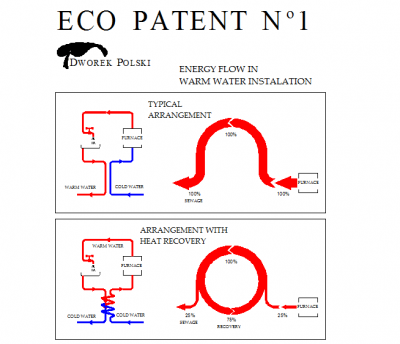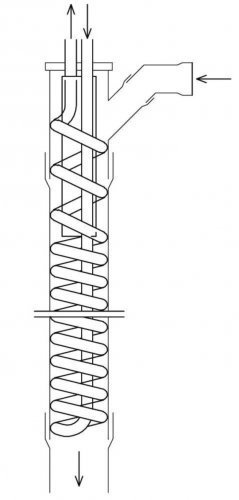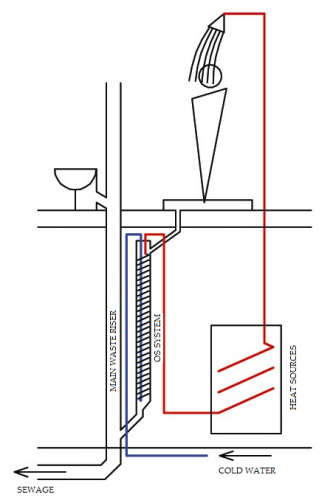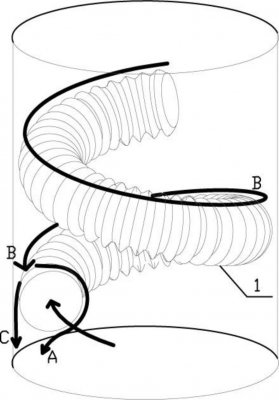Hot Water
After several years of research in our laboratory, we have developed and patented a unique on a global scale, high-performance device, which recovers thermal energy from the water used in homes with an efficiency of over 75% and does not have any equivalents on the market. In houses, in Kędzierówka it is a standard. This is the first in the world commercial housing estate, where all of the energy needed to heat water comes from renewable sources. Our device, which we call in old polish "ODZYSKWA ŚCIEKOWA” (or eng. WER system – water energy recuperator) cooperates in this estate with solar collectors.

The essence of this very simple solution is to place a helically wound stainless steel pipe into the waste riser, where, in an opposite direction to the wastewater, cold water flows, supplying a heat source (water-heating furnace or exchanger). The device is intended for recovering energy from the so-called "gray" wastewater, i.e. with the exclusion of "brown" wastewater - from the toilet. As a result, it requires to separate the waste riser for the shower and the wash basin from the riser for the toilet.
 outline of the wastewater recoverer |  assembly principle |
The total efficiency of the device is similar to the efficiency of the system of solar collectors (about 55%), but the price is many times lower. It is important that, in contrast to the solar collectors, it has a uniform efficiency throughout the year. As a result, solar collectors in our estate do not play a primary, but complementary role - they heat the already half-heated water.
Considering 800 kWh annual energy consumption for heating water per one man, 4 people per 1 device and 50% efficiency, we will obtain the amount of the energy recovered per year 4*800*50%= 1600 kWh/a*units.
The wastewater recoverer is a counterflow heat exchanger, where efficiency depends primarily on the length. The level of 75%, which we have chosen (corresponding to 2m length of the device) is not difficult to improve, and is a balanced reasonable optimum.
From an economic point of view, for homeowners, the investment is 5 times more cost-effective than installing a system of solar panels. Within a few years, the device should be mass produced and become a common standard in Europe. Due to the exceptional ratio of cost to the effects, both economic and ecological ones, it should not only be installed in all new houses, but also in already existing ones.
Principle of Operation

flow within the riser
The insertion of the helical, corrugated pipe in the interior of the riser increases the hydraulic resistance. As a result, the waste water flowing down at a speed low enough so that it does not detach and does not fall freely, but by means of Coanda forces it adheres to the inner pipe, having washed it, returns towards the outer wall of the riser (flow A). The helical flow B and flow C (between the notches of the inner pipe and the surface of the riser) evenly distribute the flow of liquid around the perimeter of riser, prevent its local concentration, i.e. local growth of the kinetic energy of the liquid. Flows intersect, providing permanent, turbulent mixing of the water. All the three flows together make the majority of the inner pipe surface washed by the liquid flowing down, and large heat exchange surface results in high efficiency of the entire system.
The open space for flow of water has, everywhere, its section not smaller than the pipe typically used for runoff from the shower and wash basin with a diameter of 50 mm, much larger than the typical siphons. As a result, the system is fully protected from becoming clogged by impurities and sediments. Measurements have shown that, after 1 year of intensive exploitation, efficiency of the whole unit fell by only 1%.
